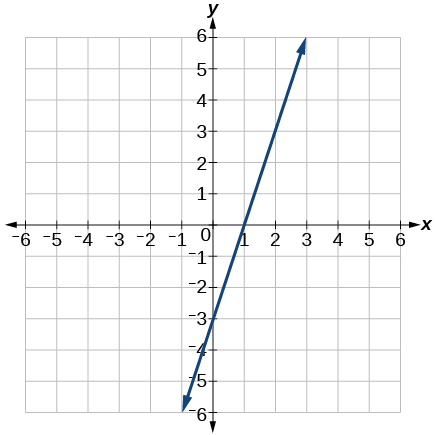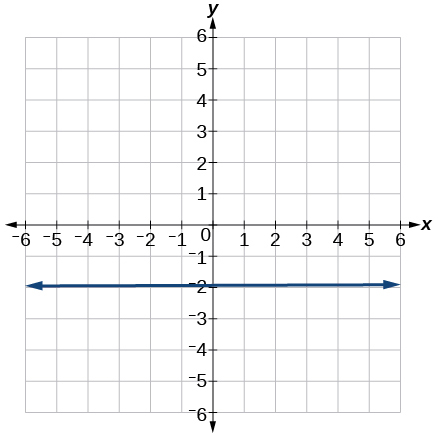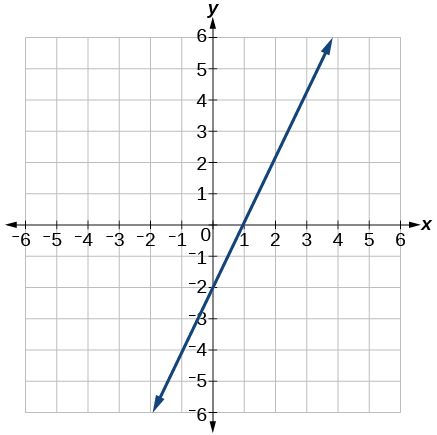4.1E: Linear Functions (Exercises)
( \newcommand{\kernel}{\mathrm{null}\,}\)
1. Determine whether the algebraic equation is linear. 2x+3y=7
2. Determine whether the algebraic equation is linear. 6x2−y=5
3. Determine whether the function is increasing or decreasing. f(x)=7x−2
4. Determine whether the function is increasing or decreasing. g(x)=−x+2
5. Given each set of information, find a linear equation that satisfies the given conditions, if possible.
Passes through (7,5) and (3,17)
6. Given each set of information, find a linear equation that satisfies the given conditions, if possible.
x -intercept at (6,0) and y -intercept at (0,10)
7. Find the slope of the line shown in the graph.

8

9.

10
Does the following table represent a linear function? If so, find the linear equation that models the data.
| x | –4 | 0 | 2 | 10 |
|---|---|---|---|---|
| g(x) | 18 | –2 | –12 | –52 |
Does the following table represent a linear function? If so, find the linear equation that models the data.
| x | 6 | 8 | 12 | 26 |
|---|---|---|---|---|
| g(x) | –8 | –12 | –18 | –46 |
12. On June 1st , a company has $4,000,000 profit. If the company then loses 150,000 dollars per day thereafter in the month of June, what is the company's profit nth day after June 1st ?
For the following exercises, determine whether the lines given by the equations below are parallel, perpendicular, or neither parallel nor perpendicular:
13. 2x−6y=12−x+3y=1
14 y=13x−23x+y=−9
For the following exercises, find the x - and y - intercepts of the given equation
15. 7x+9y=−63
16. f(x)=2x−1
For the following exercises, use the descriptions of the pairs of lines to find the slopes of Line 1 and Line 2. Is each pair of lines parallel, perpendicular, or neither?
17.
- Line 1 : Passes through (5,11) and (10,1)
- Line 2: Passes through (-1,3) and (-5,11)
18.
- Line 1: Passes through (8,-10) and (0,-26)
- Line 2: Passes through (2,5) and (4,4)
19. Write an equation for a line perpendicular to f(x)=5x−1 and passing through the point (5,20).
20. Find the equation of a line with a y - intercept of (0,2) and slope −12.
23. A car rental company offers two plans for renting a car.
- Plan A: 25 dollars per day and 10 cents per mile
- Plan B: 50 dollars per day with free unlimited mileage
How many miles would you need to drive for plan B to save you money?


